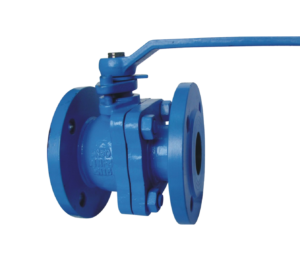Key features/benefits
• Asbestos free
• Reliable, leak-tight shut off-in line and to the atmosphere
• Unique robuts construction principle
• No wear on seling surfaces
• Insensitive to impurity
• Long service life and optimised life cycle costs
• Excellent regulation of flow
• Maintenance free
• PTFE Stainless steeldisc spring
The Sealing System
The ball togather with the two sealing elements at the inlet and outlet of the ball valve, forms a single system the pressure of themedium process the ball agains the sealing element at the outlet part, but at the same time process the sealing element at the inlet part against ball. The reulting double sealing effect means inceased service reliabity. Both seals, act simultaneously. The sleeve surronding the out edges of the diaphragm disc seals the ball valve to atmosphere.




